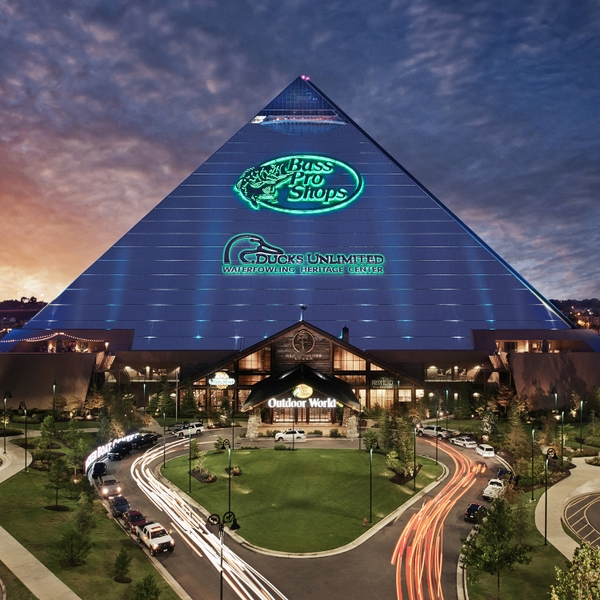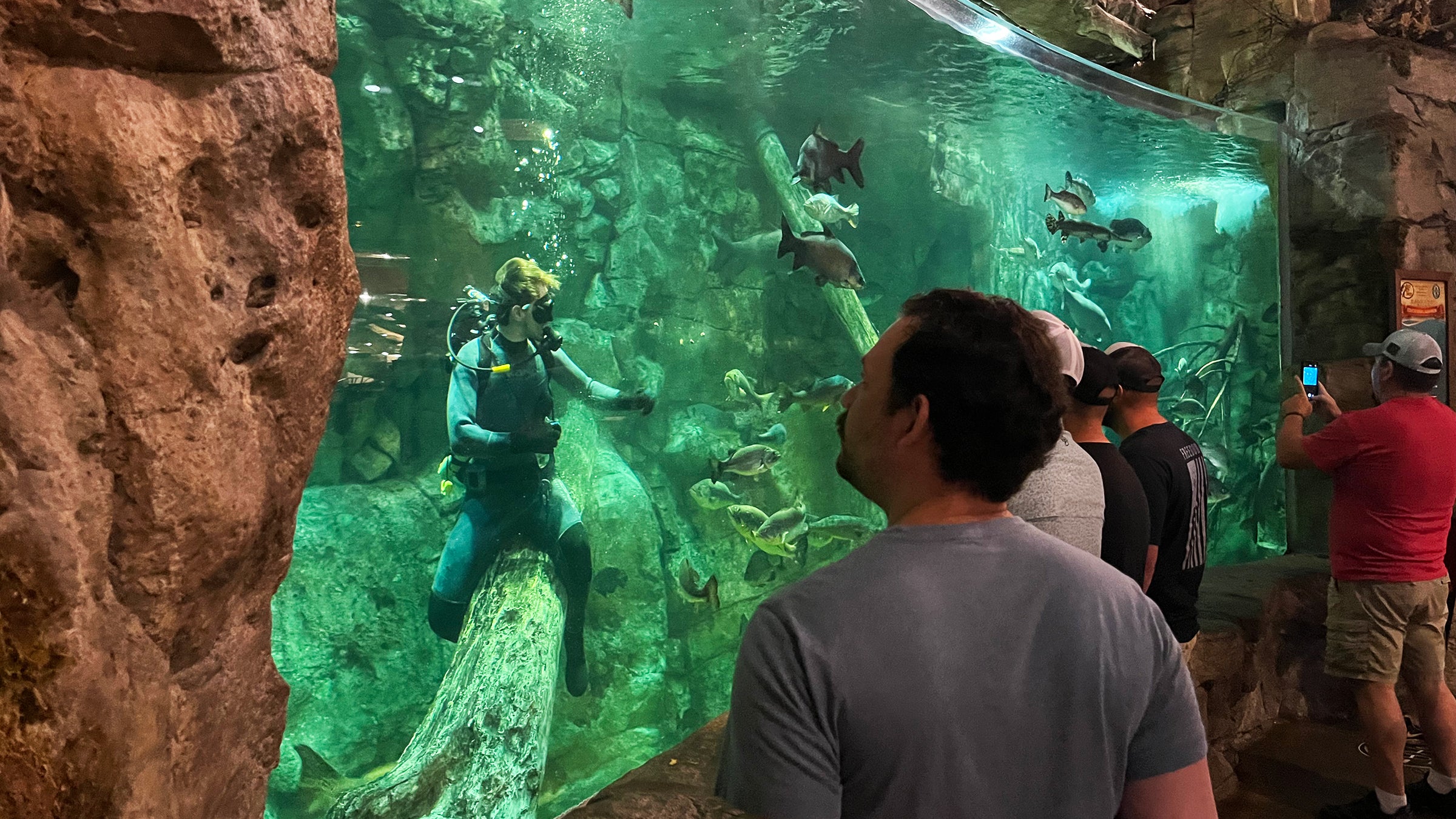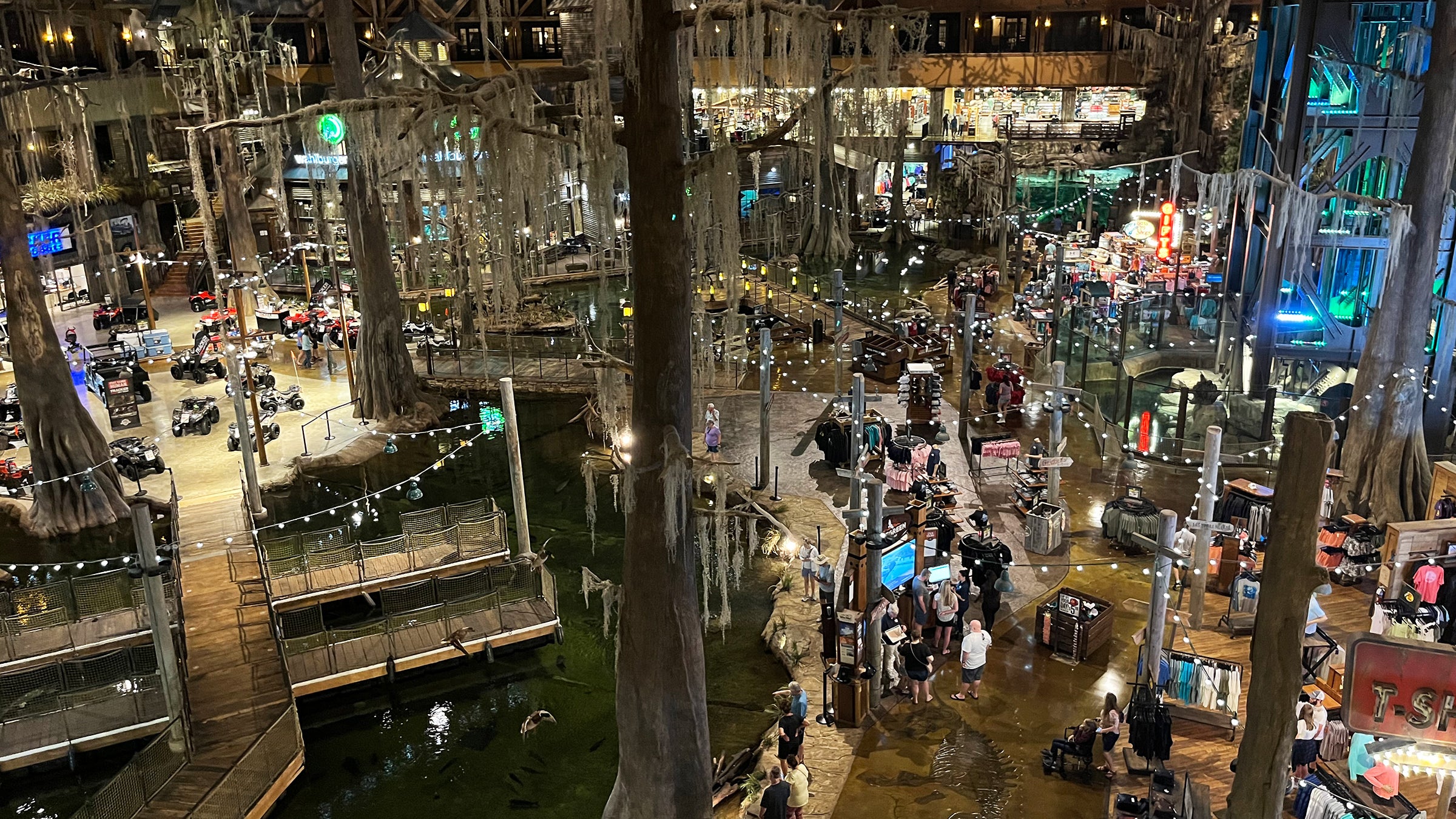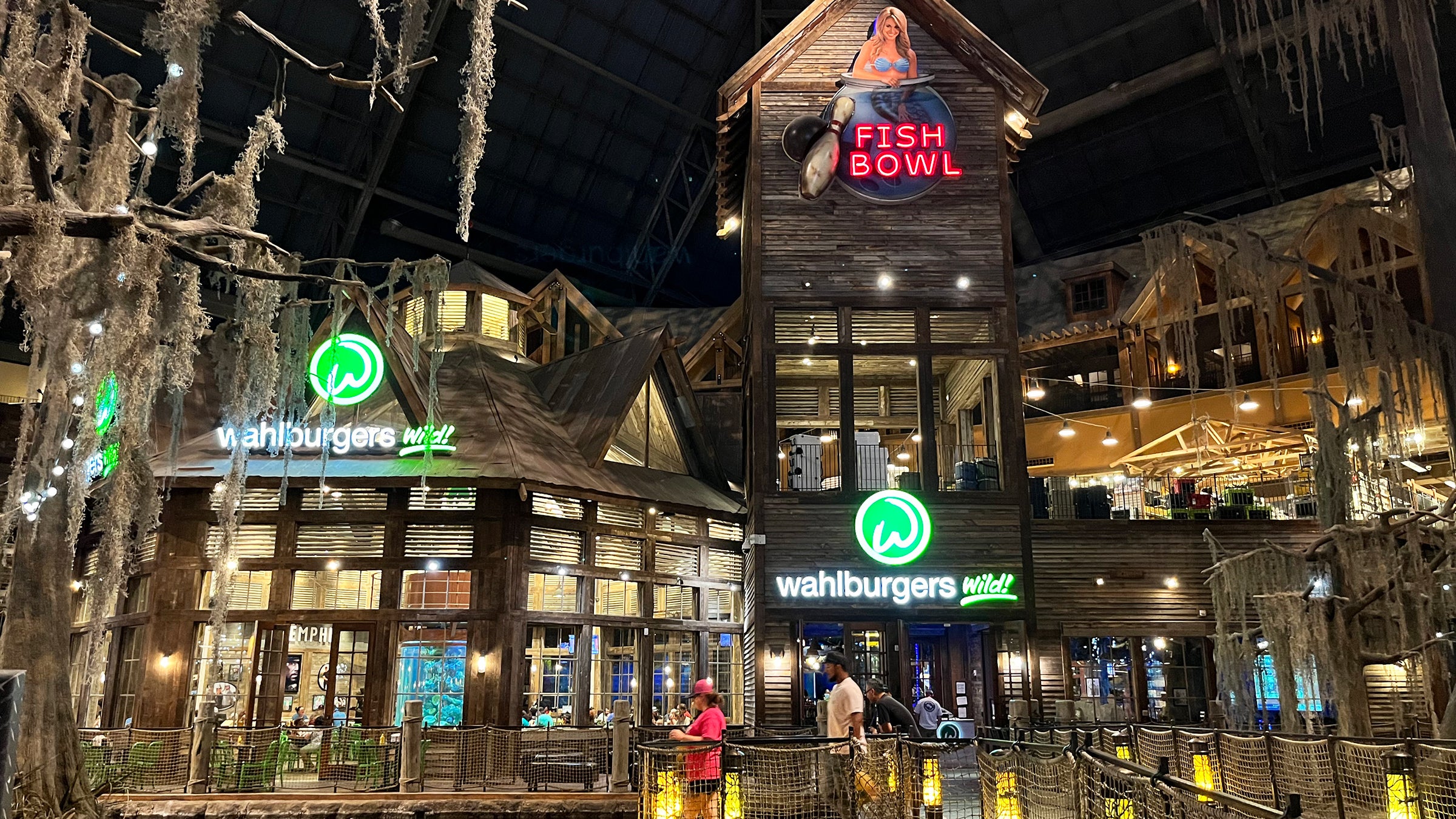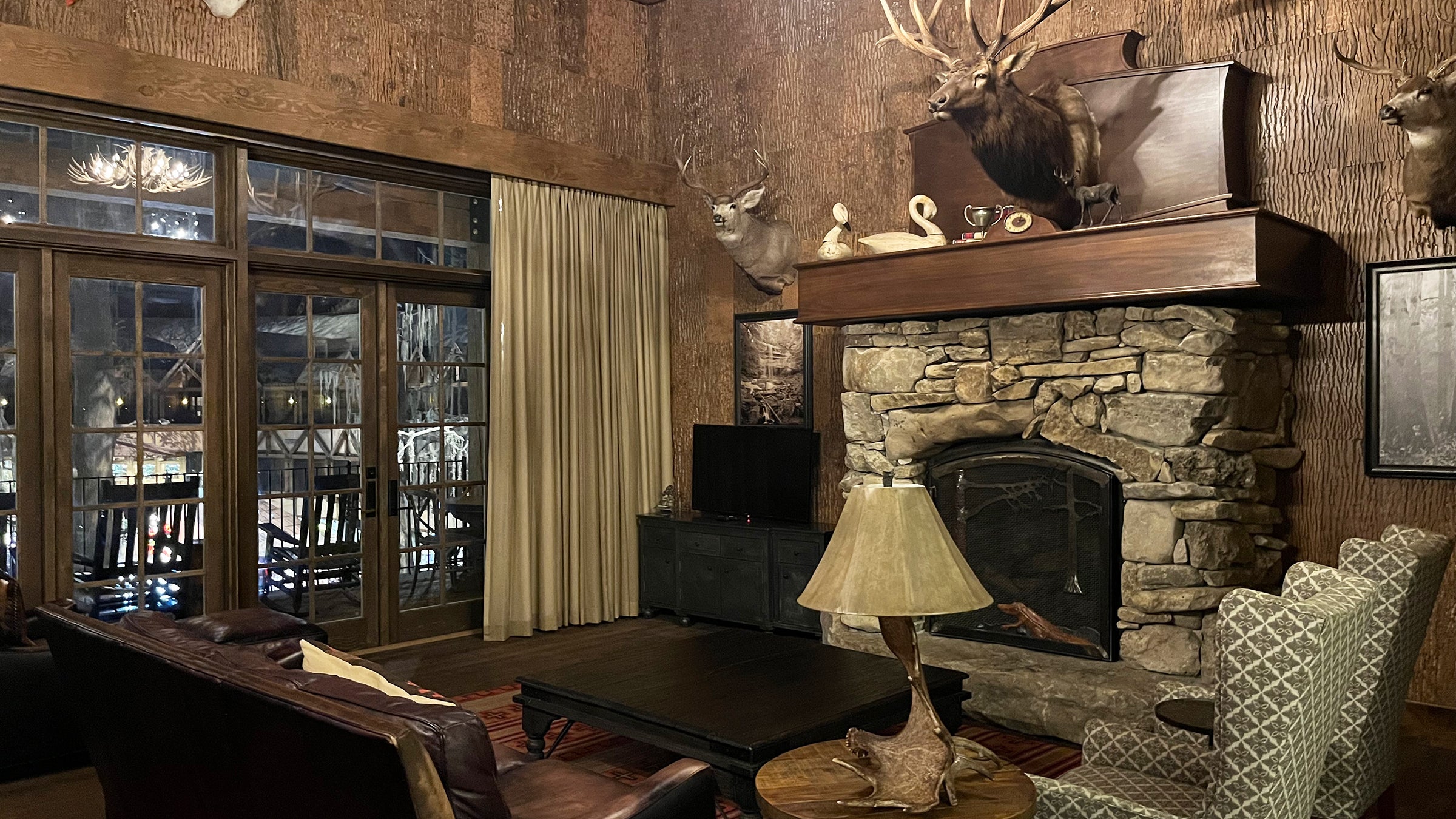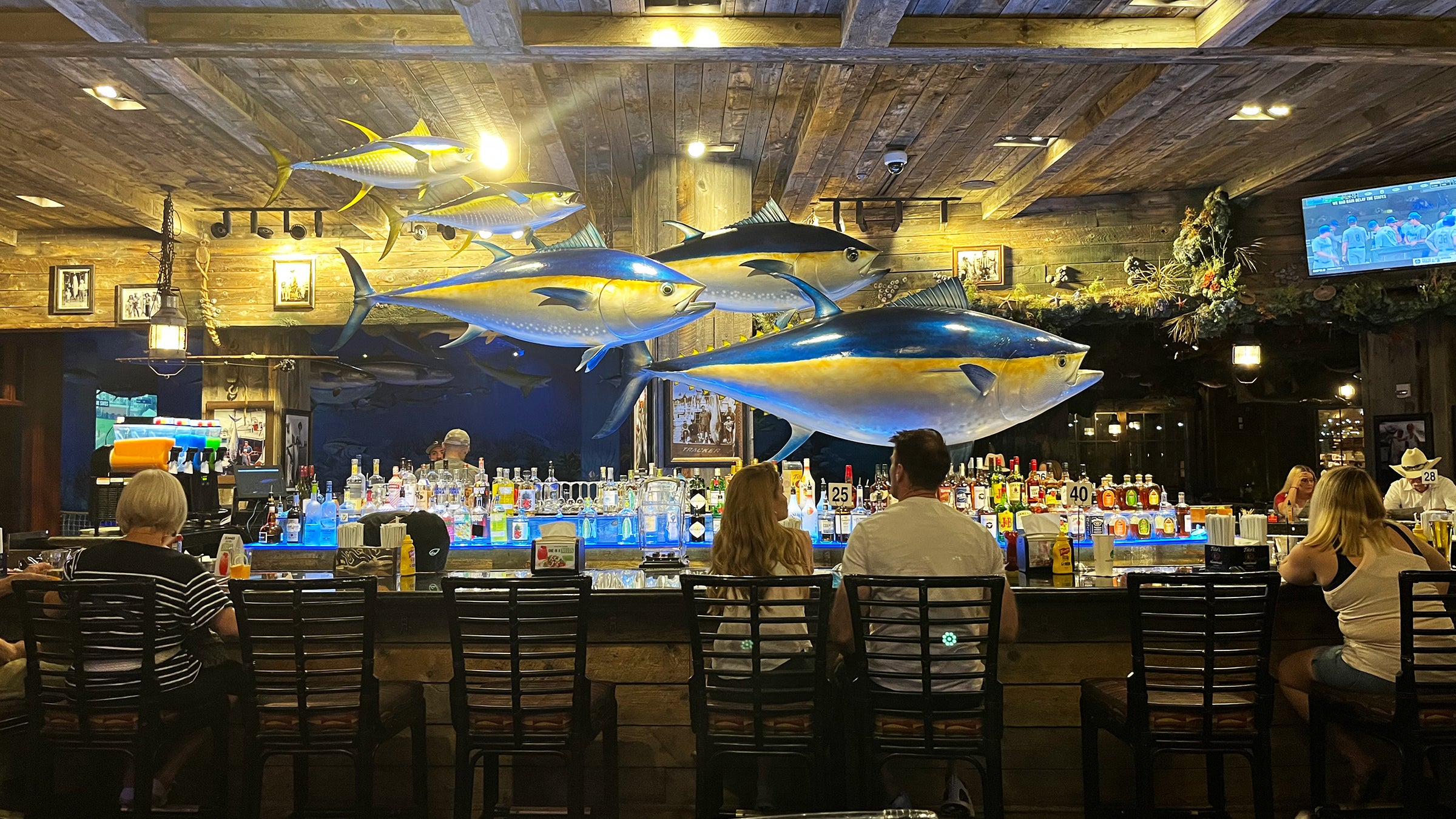How the Bass Pro Shops Pyramid Became a Memphis Icon
In 2015, billionaire entrepreneur Johnny Morris opened a hunting-and-fishing store that doubles as a theme park, with multiple bars and restaurants, a luxury lodge, and an entire swampland forest decorated with taxidermy—all shoved inside a replica Egyptian monument. We sent one writer on a 24-hour mission to explore this exotic modern wilderness.
New perk: Easily find new routes and hidden gems, upcoming running events, and more near you. Your weekly Local Running Newsletter has everything you need to lace up! .
Partway up a blacktop driveway leading to a hotel called , you pass under an archway that says: “Welcome to Sportsman’s Paradise.” A coil of interstate on-ramps looms overhead, which, given the architecture just beyond, brings to mind a nest of mythically proportioned snakes protecting an unholy monument.
The generic-sounding name of the 103-room lodge doesn’t match the eccentric setting. The hotel exists inside a huge, black, stainless-steel pyramid that rises 321 feet above the flat landscape of Memphis, Tennessee, a city known far and wide for Elvis, , barbecued pork—and this bold architectural statement.
For this pyramid, sheer size is not the real superlative; Vegas, after all, has its own, even larger tetrahedral hotel. What sets it apart is the fact that its cavernous interior has been converted into an outlet of , the world’s largest hunting-and-fishing retailer, and the hotel rooms—set in the ring-shaped interior balconies that make up the pyramid’s two upper levels—overlook the store’s floor space. On the exterior of the pyramid, a 78-foot-tall re-creation of the company’s logo, featuring the eponymous fish in mid-leap, glows green above the Mississippi River at night.
The stature of this landmark is suggested by the fact that it’s a rare retail store—the only one, so far as I can tell—to appear on a U.S. driver’s license. When Tennessee officials designed a collage of to use as the background of state I.D. cards, they thought: What could represent Memphis better than this inexplicable shrine?
“I never thought there’d be a more famous Memphis building than Graceland,” says Ryan Hailey, a local video editor and a self-described for the city. “And I sure never thought that building would be a pyramid-shaped tackle shop. But here we are. And for some reason, as a Memphian, that makes me very proud.”
Alex McDaniel, managing editor of the USA Today sports website , moved to Memphis in 1994, when she was seven. “I’ll never forget crossing the Mississippi River bridge into the city and seeing the pyramid for the first time,” she says. “It was gaudy and gorgeous, and I had no idea what it was used for, but to this day, when I go back for a visit and see that pyramid, I know I’m home.”
It’s not just Memphians who are allured by this building. I know a couple who live two hours south of the city, in rural Mississippi, and drive up once a month or so for the sole purpose of visiting the pyramid, because the place is a kind of Disneyland, a fine way to entertain and tucker out the kids. Stopping in to buy a discount-bin trucker hat—and taking an Instagram selfie—has become a road-trip rite of passage.
But the building’s true grandeur can only be seen once you step inside. Beyond the gabled entrance portico, a massive timber structure meant to suggest an Adirondack lodge, lies a wilderness—or at least its shopping-mall simulacrum. The decor is heavy on fake rock and flowing water and taxidermy, with an emphasis on regional fauna: bears and feral pigs and white-tailed deer, scattered amid replica cypress trees.
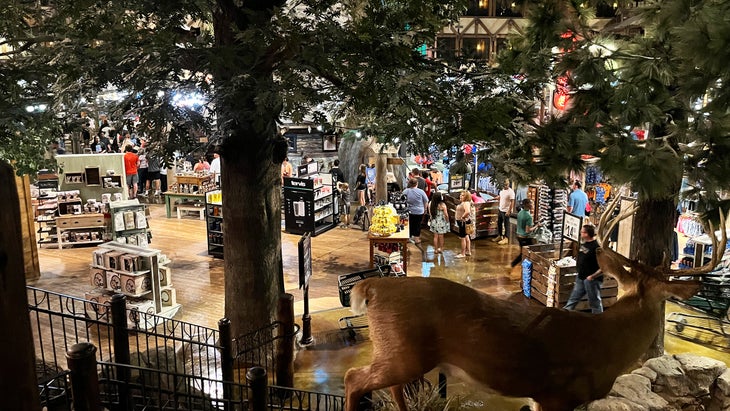
According to Michael Rinehart, the store’s assistant general manager, the pyramid boasts the world’s largest stock of duck-hunting gear. The guest rooms are outfitted with furnishings that would fit well in the backwoods manor of a Gilded Age robber baron. The rooms’ standout feature, though, are simple “back porches” (so called by the company) that overlook the ground-floor shopping expanse, which is designed to look like a swamp, complete with moss, waterways, and a host of stuffed and living creatures. With two restaurants and three bars, a , a steamboat-themed arcade shooting gallery, and a spa—just the thing for weary spouses with little interest in hunting and fishing—a family could camp out within this 535,000-square-foot playground for days, perhaps whole seasons.
For my own expedition, I figured a single night would suffice. I’m not a hunter—just a writer who likes to spend time outside—but I’ve always felt drawn to this place.
